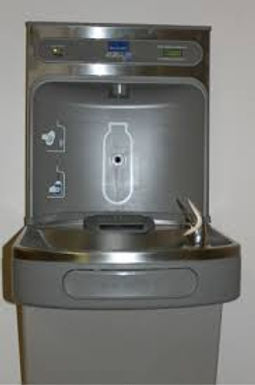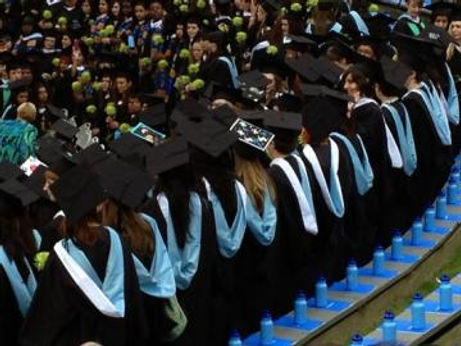









Water as a resource
Water... A simple necessity for life that comes with choices. We make choices of how much water use and what we use it for. These daily choices affect our environment in ways we don't usually think about. It is because we often forget about the effects that our choices have, that we tend to exploit this resource. The importance of water conservation isn’t new. We know that water is a finite resource and is a public access good that is used for our daily activities like drinking, showering and laundry. We use and share the limited freshwater with each other and with the northern part of South Hadley community. When we conserve our water, we put less pressure on its distribution, supply, and sewage treatment facilities. We also use less energy to heat and pump the demanded amount of water.
Our water is supplied by two wells at the Dry Brook Pumping Station, located near the town of Hadley and along the Connecticut river. According to the 2007 South Hadley Fire District No. 2 water quality report, the northern section of South Hadley pumped 158,039,000 gallons of water. In 2010, the well supplied 159,575,000 gallon of water. In a 2011 water quality report the well supplied 143,483,000 gallons of water. The most recent water quality report from 2013 states we used 146,849,000 gallons of water. The wells pump 950 gallons of water per minute. We can see the general decline in water usage, which is probably because of water conservation efforts made my residents and businesses of northern South Hadley.
According to Ecoreps, MHC uses 90,000 gallons of water a day. Mount Holyoke spends $26,000 a month on the water/sewer bill. Water pricing is set to be at the lowest possible price for consumers. According to South Hadley's Fire District No. 1 website, it states that 750 gallons of water costs $3.59 , that's relatively cheap. It's because of the low cost of water that students, residents, and businesses tend to over-use the resource. If 10,000 gallons of water costs 48 dollars and MHC uses 90,000, then it costs the school about $432 dollars a day for water.
Water Conservation at MHC= Saving Money and Water In the Long Run
Currently, it's hard to convince students to make changes for a more sustainable lifestyle , since there is little to no incentive for them to do so. If we aren't conscientious of our water usage, it theoretically could lead to the tragedy of the commons since we are all sharing a limited resource. However, because of new technology and student and facilities management actions for water conservation, we are cutting the amount of water and energy we use. Students and facilities management have thought of ways to conserve water and save money in the long run. They do a cost benefit analysis to weigh the benefits and costs of new technology.
Back in 2006, two students proposed a plan to install lower flow faucet screens in the dorms and academic buildings, which would have a 77% reduction in water use of those faucets. Before they implemented this plan, we used 2.2 gallons per min of water from the faucets. They proposed newer lower flow faucets screens that use 0.5 gallons per min, which would save upwards of 18 gallons of water per person per day.
They did a survey after installing it in one floor in Buckland, which in a way represented student’s willingness to accept the new faucet screens since they asked whether they thought the new screens were worse, had no difference, or better as well as noting if they thought it was a good idea. The results showed that majority of students felt it was a good idea and it was a better faucet plan.
Here's a picture of the survey, provided by
John Dohan (Plumbing supervisor)
Facman then implemented the plan and the annual water savings projected was about 7,318,500 gallons, which led to monetary savings of $29,274 based on current water prices.
According to Ecoreps, the national average of showering is 7.5min. Most of MHC’s dorms use low flow shower heads that use 2.5 gallons per minute. New Dorm showers use 1.5 gallons per minute. If 2,200 students took a 7.5min shower, we would use over 41,000 gallons of water, but if we limit the shower to 5min then we would save over 10,000 gallons. If we used 10,000 gallons less of hot water, then we would reduce greenhouse gas emissions by 11.5tons. Students might see the present benefits of using a shower. Shower's are a relaxing time where students can unwind and use nice hot water to wash up. However, without education on just how much water they use, they won't know the external costs associated with using a certain amount of water.
Here are pictures of the new and old
shower heads, provided by
John Dohan (Plumbing supervisor)
According to reports from Mr. Donah, most of the dorms toilets were designed to flush at 4-5 gallons per flush, but have been retrofitted to flush at 3.5 gallons per flush. That’s still a lot of water to be flushed and used. If a student goes 4 time a day that’s 14 gallons a day and times that by 2200= 30,800 gallons a day.
It’s a goal to operate using the 1.6 gallons per flush of which there are some dorms that have this, but some can’t be retrofitted to operate at that level like Torrey hall. According to Mr. Donah, Torrey hall bathrooms would have to have major structural renovations of bathroom walls, ceilings and floors for the toilet retrofitting to work. Our sewage goes to South Hadley’s wastewater treatment plant which treats the water and flushes it back into the river.
Water as a commodity
Photos:
Blanchard's method
of distribution of bottled
water.The middle and
far right photos indicate
the costs of
different bottled
beverage choices.
Water is not only looked at as a basic natural resource, but also a commodity. Bottled water is an example of commodization of a public good. At Blanchard, students have numerous choices to quench their thirst, and one option is bottled water. When we demand bottled water, we rely less on our public water infrastructure for tap water. If students are willing to pay for bottled water, then they believe there are more benefits associated with drinking it. However, there are many negative externalities when producing and consuming bottled water that students might not know about. Every year, the bottled water industries use 17 million barrels of oil to make the plastic bottles, which doesn't even take into account the oil used in transportation. Production emits CO2 emissions by concentrating the oil into bottles. Bottled water is packaged and shipped across the country, which contributes to CO2 emissions. Extraction of bottled water stresses the amount of water available. There are problems where companies are mining more than can be replaced by the natural water cycle, which causes some water scarcity in the U.S. Bottled water also creates more waste than there would be if they used tap water. These are just some of the negative externalities associated with bottled water use.
Bottled water typically costs $1.25 and if students bought bottled water for a week that costs $8.75, which is $35 a month.
Some students at MHC decided to battle the use of bottled water in the college. It is because of these negative externalities and the fact that bottled water should be a basic human right that students are taking a stand. They started a Think Outside the Bottle campaign, which is part of Corporate Accountability's national action. Students of this campaign are raising awareness of the problems associated with bottled water in the hopes to have MHC become bottled-water-free campus. They collect petition signatures from other students to support this effort and talk closely with facilities management, the administration, and the President of the college. It is because of these efforts made by TOTB that Kendade is bottle-water free, the graduation commencements are a water-bottle free, and each student gets a reusable water bottle.
Photo: The first graduation commencement
that was water bottle free (2013).
Students were given reusable
water bottles.
Photo: The second graduation
commencement that was water bottle free
(2014). This time no bottles were given,
but there were available at water stations
to refill a reusable water bottle.
In efforts to reduce the number of water bottles bought, there have been installations of hydration stations. Hydration stations are systems to encourage students to refill their reusable bottle, since it makes it easier to refill it. These stations also show the number of plastic water-bottles you'd save when using these systems. According to the report from Mr. Donah, there are 33 hydration stations on campus. Each installation costs 1,500- 2,000 dollars. After a year or two years the filter needs to be replaced and that costs 75 dollars. Since the college is planning to install more hydration stations around campus, they believe that the social benefits of these hydration outweigh the monetary costs of installation.